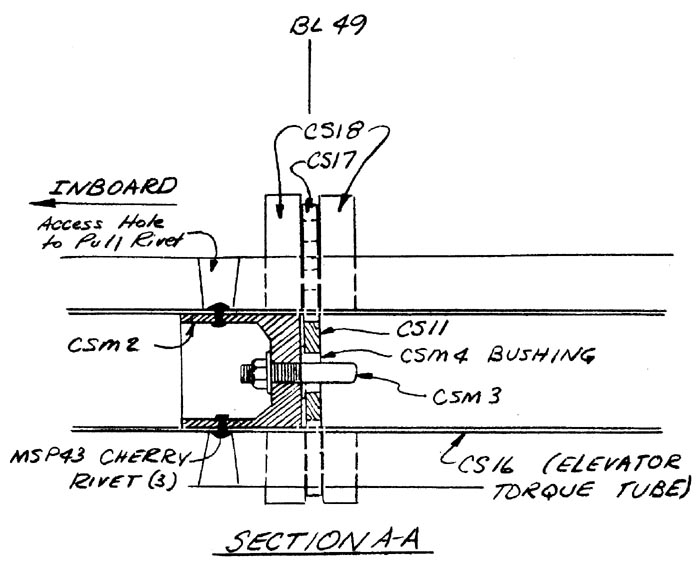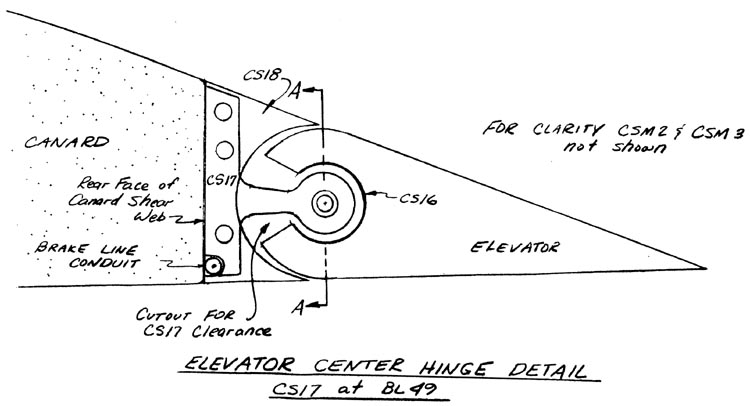Q1 Plans Chapter 10 Page 10-8
- Details
- Category: Quickie Plans
- Published: Wednesday, 10 September 2008 01:00
- Written by Dan Yager
- Hits: 2187
FITTING THE MIDSPAN ELEVATOR PIVOT
This section is quite similar to what you had to do to mount the outboard aileron pivot previously, so review that work before reading any further.
The midspan pivot is mounted at BL49.
Screw CSM3 into CSM2 and retain it with a locknut. It must be tight. Round the end of CSM3 slightly.
Measure 38” outboard from the inboard end of the elevator. Using a router bit, route a slot 1/8” wide for about plus or minus 17 deg. of rotation. Next, insert CSM2 into CSI6 with the flange pointing inboard. You may have to sand CSM2 to get a snug fit. Push CSM2 outboard thru the tube with a stick until you just see it flush with the routed slot. Rivet 3 MSP43 cherry rivets to hold it in place. Note that the rivets grip the tube/CSM2 assembly, To do this you will have to drill access holes thru the foam so that the rivet gun can reach the rivet. These holes can be filled later with foam and micro.
The routed slot must be opened up so that CS17 can slide off of CSM3 and out of CS16 while remaining perpindicular to CS16. This means that the slot must be about 0.5” to 0.6” wide. Also, check to see that CS17 can rotate about CSM3 approximately 17 deg. in each direction while inside CS16.
Repeat this procedure with the other elevator. Be careful that the flange on CSM2 points inboard so that CS17 will slide off CSM3 as the elevator is moved inboard.
CS18 are shaped blocks of red foam which are mounted in the wing, butting up against the rear face of the canard shear web. Later on, CS17 will be sandwiched between a pair of CS18’s. To find out where the pair of CS18’s should go, temporarily set each elevator in its approximate postion on the canard, with the inboard elevator edge at BL11. CS17 should be against CSM2. Now you can mark where the pair of CS18’s must go to capture CS17. Remember that to remove the elevators, they are moved inboard (while CS17 remains fixed between the pair of CSI8’s) until CS17 slides off CSM3; then the elevator äan be pulled off. If you don’t stand back and think about this, you are likely to error during the installation.
Once you know where the CS18’s go, use a router as you did with the ailerons, to remove that portion of the elevator slot foam core, including the BID on top and bottom






